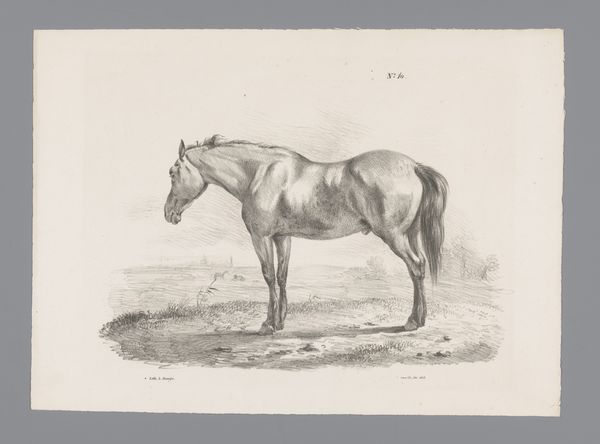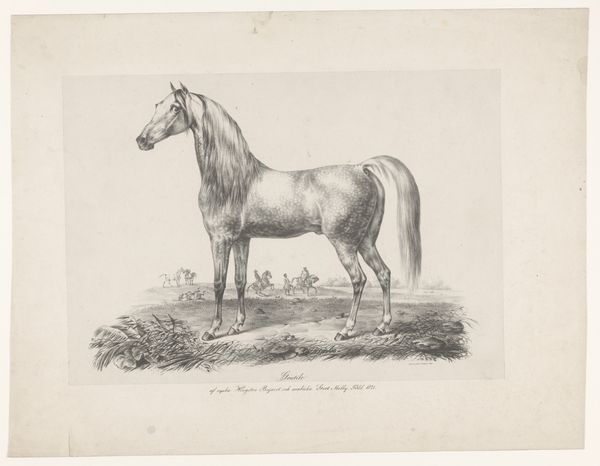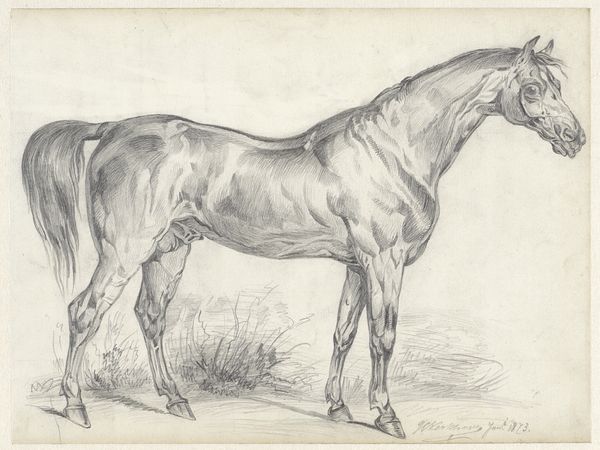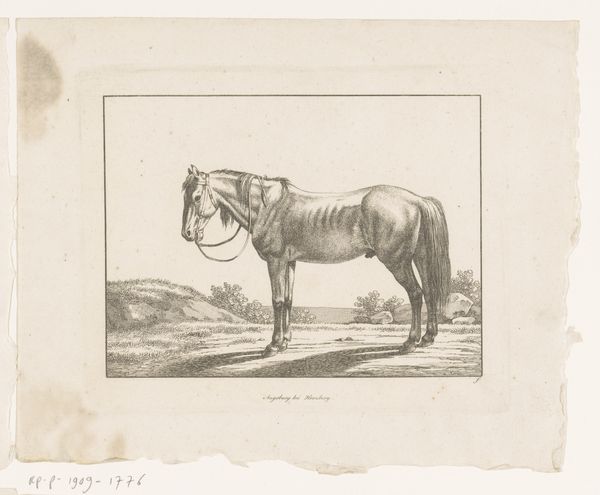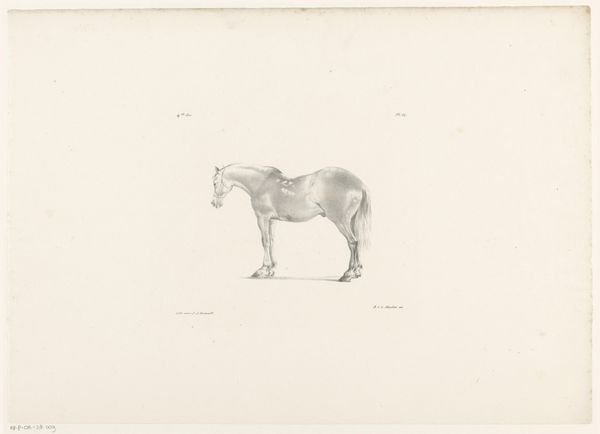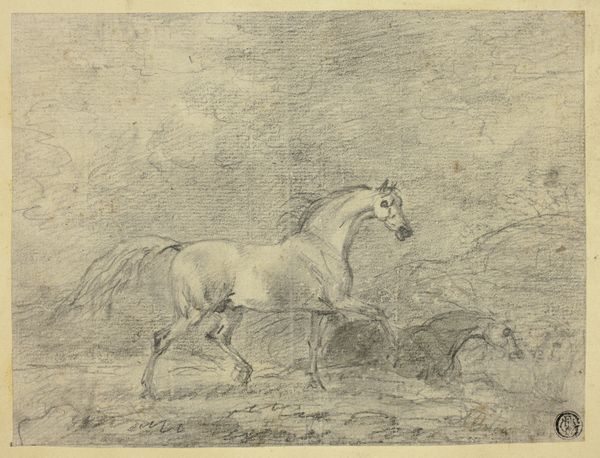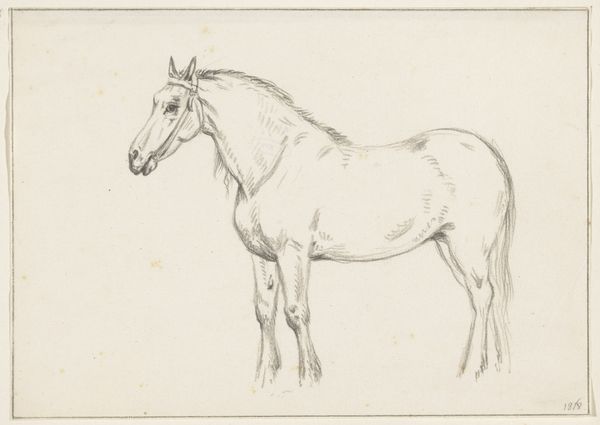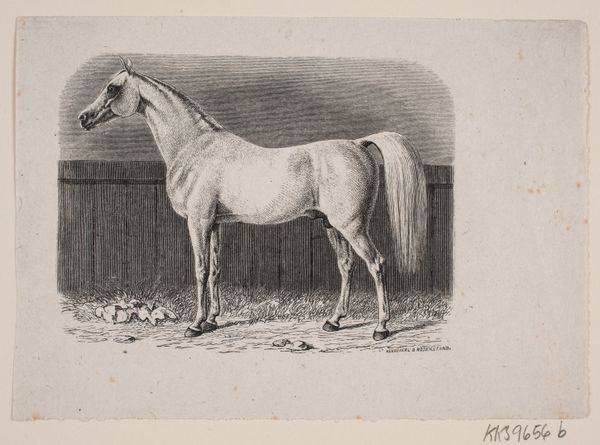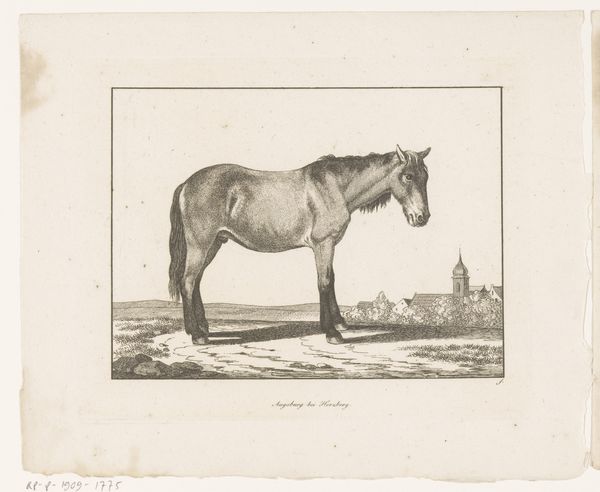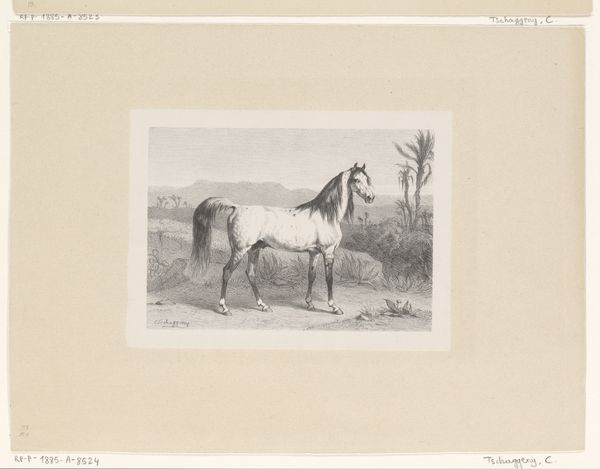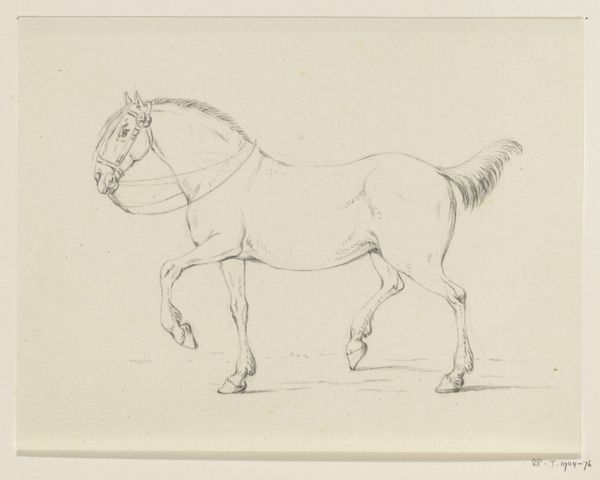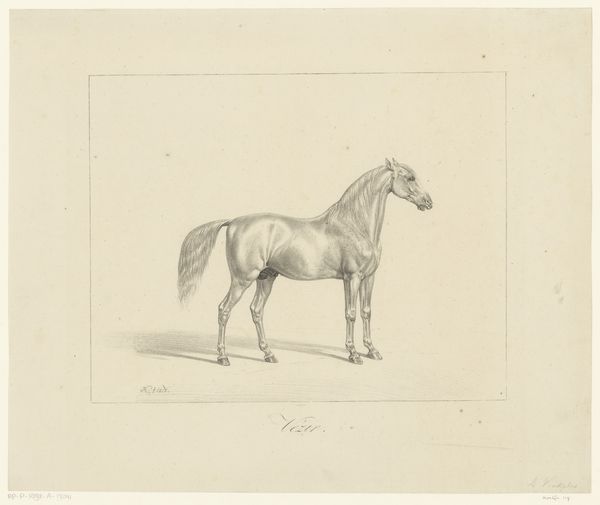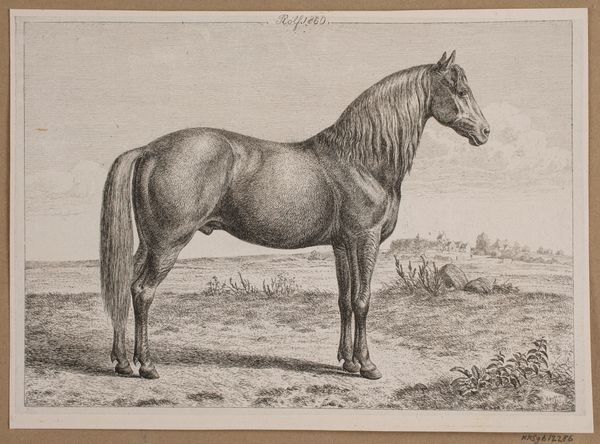
drawing, pencil
#
portrait
#
drawing
#
landscape
#
pencil
#
horse
#
realism
Dimensions: height 263 mm, width 356 mm
Copyright: Rijks Museum: Open Domain
Editor: This is "Paard in een weiland," or "Horse in a Meadow," created around 1835 by Pieter Frederik van Os. It's a pencil drawing, and something about its simplicity, the single horse in a field, feels quite pastoral and serene. What catches your eye when you look at this work? Curator: It's interesting how a seemingly straightforward image like this connects to broader historical trends. Van Os was working in a period where ideas about the Dutch landscape and national identity were being actively shaped, both by an artistic culture steeped in the memory of the Golden age and rapidly transforming urbanization. The rural setting isn't just picturesque; it’s laden with social and political implications. Why do you think the horse is so centrally placed and so isolated? Editor: Maybe it’s meant to symbolize something? Like strength, or perhaps the agrarian life being idealized at the time? Curator: Precisely! The horse itself, rendered with such realism, can be interpreted as an emblem of Dutch agricultural prowess and its perceived traditional way of life. Realism isn't just about depicting things as they are, but about choosing what to depict, isn't it? And also what it excludes: there aren't workers depicted in the scene, the harvest or a working scene. The horse in its lonesome majestty could represent the nostalgic longing for an era slipping away, for a countryside imagined free of labour. Editor: I hadn't considered that absence before. It's like the artist is carefully curating a very particular narrative. Curator: Indeed. By showcasing this "natural" scene, Van Os is participating in a larger cultural conversation about what it meant to be Dutch in an era of massive societal change. So, the piece, while appearing quiet, subtly voices powerful sociopolitical commentary. Editor: It makes me appreciate the drawing on a completely different level. Thanks! Curator: My pleasure. Recognizing those undercurrents enriches the viewing experience, don’t you agree?
Comments
No comments
Be the first to comment and join the conversation on the ultimate creative platform.
